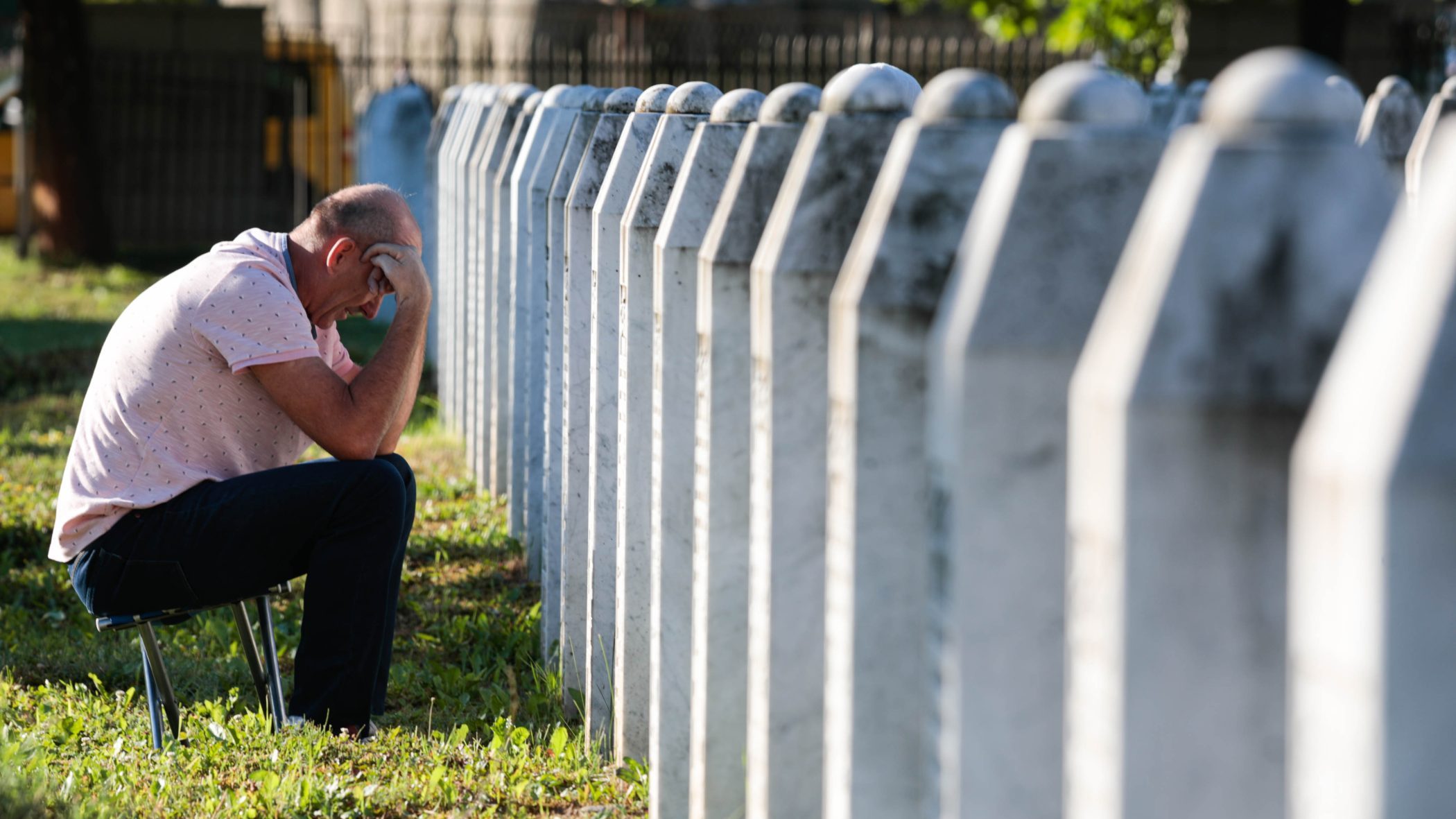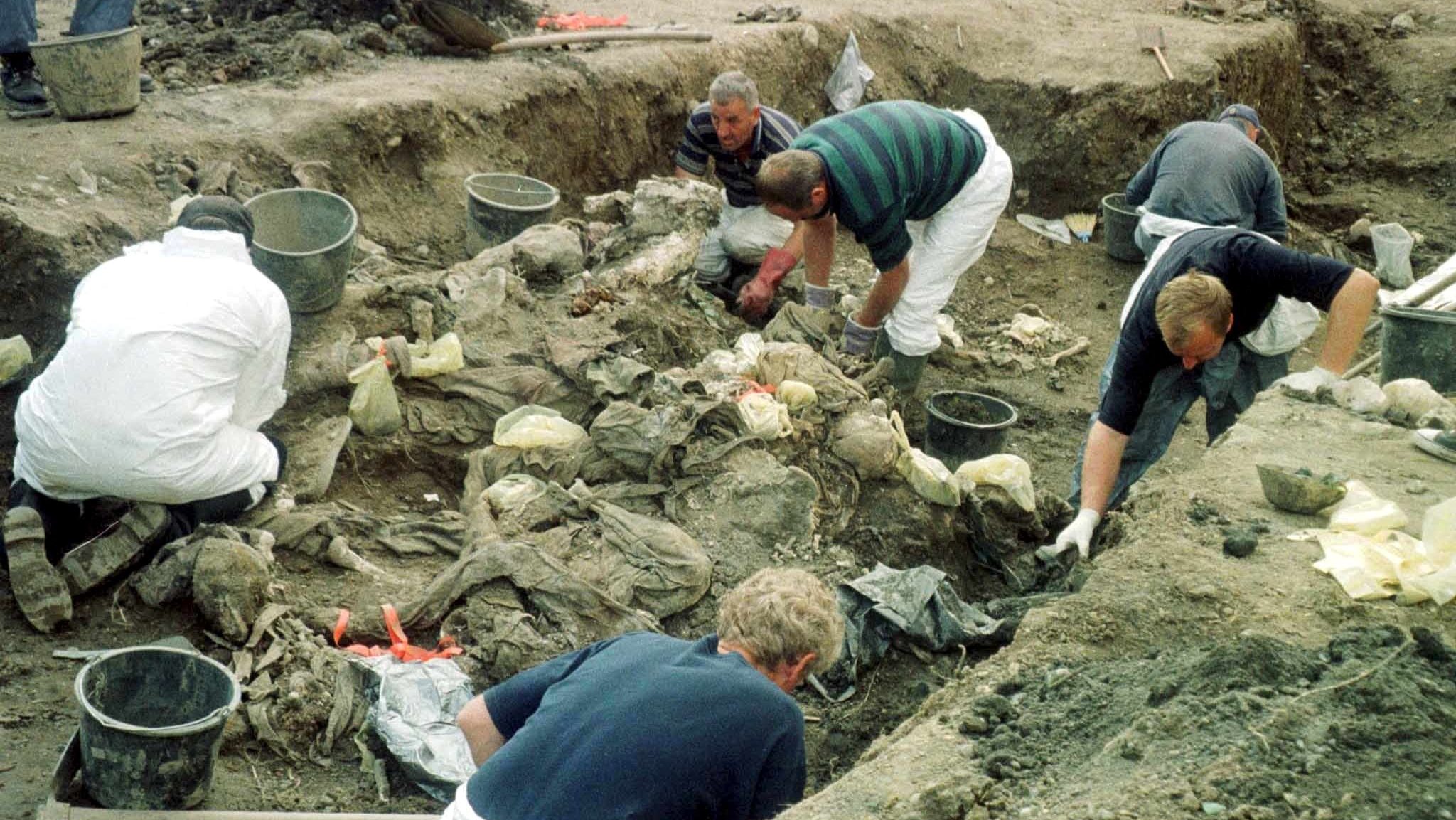This post is also available in: Bosnian
Aflash of light and an explosion are the first things that Sarajevans who happened to be at the Muzeji tram stop outside the National Museum in the capital remember about January 9, 1996, when a shell was fired at the tram.
A woman called Mirsada Duric was killed and 19 people were injured in the shelling. The attack happened despite the signing less than a month earlier of the Dayton Peace Accords, which officially ended the Bosnian war.
Nihad Sladic from Sarajevo was 15 at the time, and he was going back home from school with his father by tram that day – the day on which the tram lines began operating again after the war.
“I remember a flash and deafening explosion, followed by darkness,” Sladic recalled.
Sladic said that the projectile hit the tram when it stopped, and he and his father managed to get out quickly because they were close to the door. He cannot remember the scene exactly, but he does recall hearing “screams and noise”.
“There was ringing in my left ear and I felt blood on the left side of my head… It was the first time I saw my father panic, as he used to be a calm and composed man,” he said.
“Later on I realised his reaction was due to the large amount of blood on my sleeve and left part of my head. He ran out into the street and tried to stop a passing vehicle,” he added.
At first, he continued, “passers-by did not realise what had happened, so they did not stop”, but someone eventually drove him to a clinic.
On his arrival, the situation in the emergency room was chaotic. Only then did he realise that his entire sleeve was bloody, and he saw pieces of human tissue on his father’s clothes.
A doctor told him that he “got off lucky”, saying that he had a few small pieces of shrapnel in his head, next to his ear and temporal bone.
“For the next ten days I was unable to make out sounds with my left ear. All I heard was ringing. Twenty years later I learnt that ‘tinnitus’ is the medical term for the constant ringing in the ear, which is a consequence and a permanent reminder of the explosion on January 9, 1996,” Sladic said.
He said that for a year or two after he was injured, he would become breathless each time he rode on a tram and when the vehicle juddered on the rails in front of the National Museum.
The reopening of the tram lines after the war was, he explained, supposed to mark “the end of the madness”.
“At least that is how it seemed until that day, January 9,” he said.
‘Then there was chaos’
According to the Bosnian Ministry of Internal Affairs, which was called the Sarajevo Security Services Centre at the time, tram number 272, which was travelling from the Bascarsija area of the city, was hit by a projectile fired from the south at 5.28pm that day.
The tram driver was Mehtiba Dzevlan.
“When the trams started operating again, I was working the late shift. The first tram was empty for security reasons, the second one carried foreign and domestic officials and the third one, which I drove, had passengers in it,” Dzevlan told BIRN.
She recalled that after departing from Bascarsija and arriving at the Engineering School, she “felt something strange on her left side”.
“I looked that way and saw light approaching the tram. At the same moment I felt a blast right above the driver’s seat. Then there was chaos,” she recalled.
“The passengers began jumping out of the tram, they almost jumped through windows, as the car was full. It was really bad, stressful, but you somehow find the strength, and somehow keep a clear head when you least expect it. I managed to agree with the passengers to close the door and keep going, because we were exposed and they could target any part of the tram, any window,” she said.
She said did not know whether anyone had been hit in the attack.
“My only goal was to close the door, so we could move away. Who knows what would have happened had we stayed there, because we were a still target, they could shoot at us as much as they wanted, but when we were moving, when we went between buildings, the possibility of hitting the tram was smaller,” Dzevlan said.
She said she would never forget the moment when she tried to save her passengers.
“I was under stress, but I somehow found the strength to move away the rest of the passengers, or else we could all have been killed. I had the strength, I moved the tram and arrived at the Omer Maslic health centre,” she recalled.
“A woman was hit in her head, so I ran to the health centre and asked for someone to come and examine her. We did not know if it was a woman or a man, it was that horrible. Doctors then came and examined her,” Dzevlan said.
The woman who was hit was Mirsada Duric, the sole fatal casualty of the attack.
Dzevlan recalled that she continued to drive trams for the next ten days, but everything changed when she was supposed to drive the vehicle to the shelling site for a reconstruction of the incident.
“The tram was not touched by anyone prior to the reconstruction. When I entered the tram, I froze. I sat down, but I did not feel my legs,” she said.
“Maybe I was not aware of what had happened until I saw blood, glass and flesh. That is when I fainted. I could not walk, I went on sick leave. I had a job change and now I am working here at the dispatching centre in Cengic Vila,” she added.
The perpetrators evade justice
The attack on the tram has been described in a book entitled ‘Mass Murders of Civilians in Sarajevo During the 1992-95 Siege’. Its author, Merisa Karovic-Babic, works with the Institute for Investigation of Crimes against Humanity and International Law in Sarajevo, and for the book she researched 230 sites at which civilians were killed and wounded.
“I considered it important to mention this case, given that the crime was committed after the signing of the Dayton Peace Accords. It seems that members of the Sarajevo-Romanija Corps of the Bosnian Serb Army intended to show that they were still present in the Grbavica and Vraca area,” Karovic-Babic said.
During the war, the Grbavica neighbourhood was held by the Bosnian Serb Army, and this is where it is believed the shell that hit the tram in January 1996 was fired.
Karovic-Babic believes that attacks carried out by Bosnian Serb troops after the signing of the Dayton agreement were staged because they were unhappy that under the peace deal, Grbavica was due to become a part of the Federation entity, the part of Bosnia and Herzegovina that has an ethnic Croat and Bosniak majority, and where Serbs form the minority.
She said she researched how many crimes were committed during truces and whether ceasefire agreements were respected.
They were not, she found: “There are clear indications that, after the signing of truces, particularly when citizens of Sarajevo least expected artillery fire, there were the largest numbers of casualties.”
Several people have been convicted of bearing responsibility for attacks on the civilian population of Sarajevo during the three-and-a-half-year siege of the city by Bosnian Serb forces.
The Hague Tribunal sentenced Stanislav Galic, commander of the Sarajevo-Romanija Corps of the Bosnian Serb Army, to life imprisonment for terrorising civilians in Sarajevo, and Dragomir Milosevic, his successor as commander of the Sarajevo-Romanija Corps, to 29 years in prison.
Former Bosnian Serb political and military leaders Radovan Karadzic and Ratko Mladic were both sentenced to life imprisonment for waging a campaign of terror against civilians through sniper and artillery attacks on Sarajevo. Karadzic’s sentence is final but Mladic is appealing.
Verdicts handed down by the Hague Tribunal have determined that units of the Sarajevo-Romanija Corps intentionally targeted civilians in a campaign intended to put pressure on the Sarajevo authorities.
All those who were convicted stood trials for incidents that happened before the end of 1995. No direct perpetrators have ever been tried for shelling or sniper attacks on the population of Sarajevo, and no one has been indicted or tried for the shelling of the tram in January 1996.

